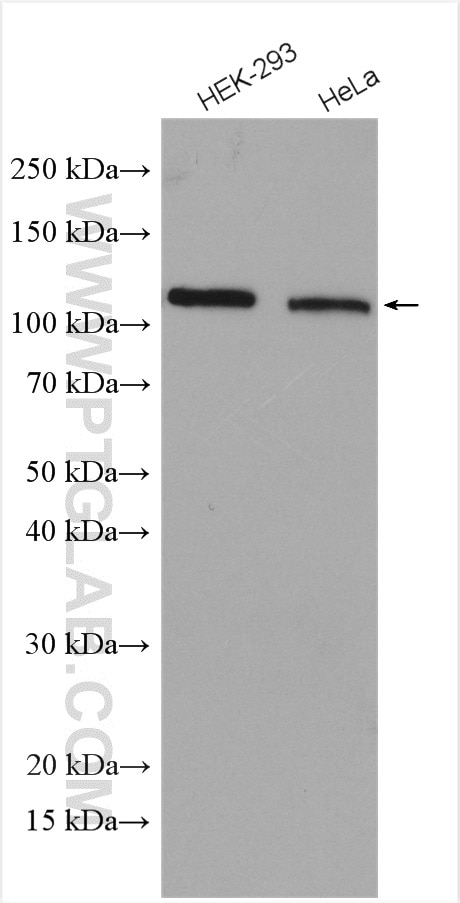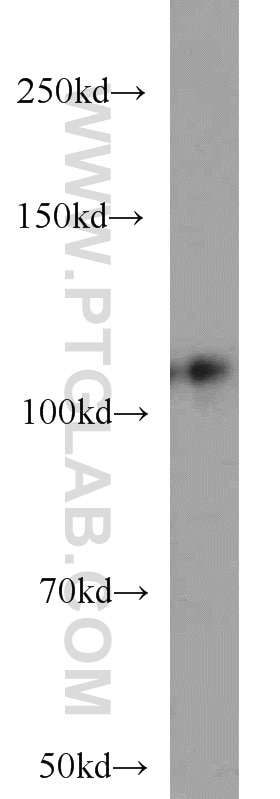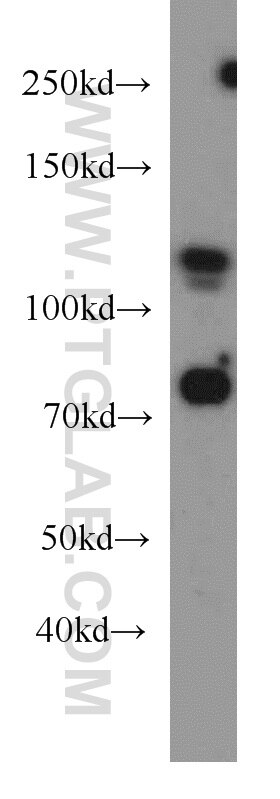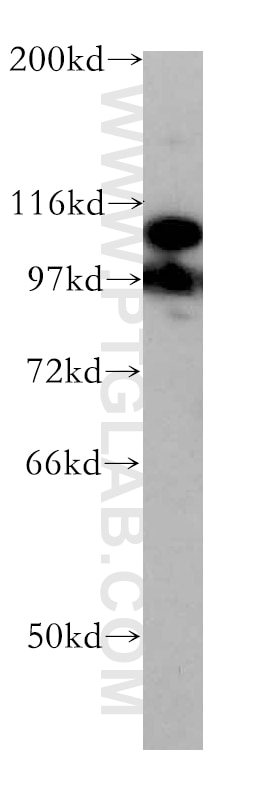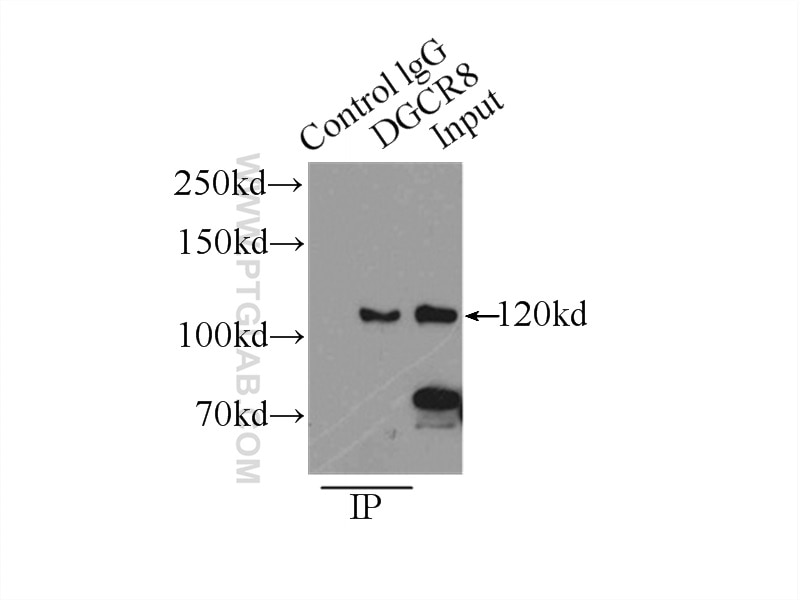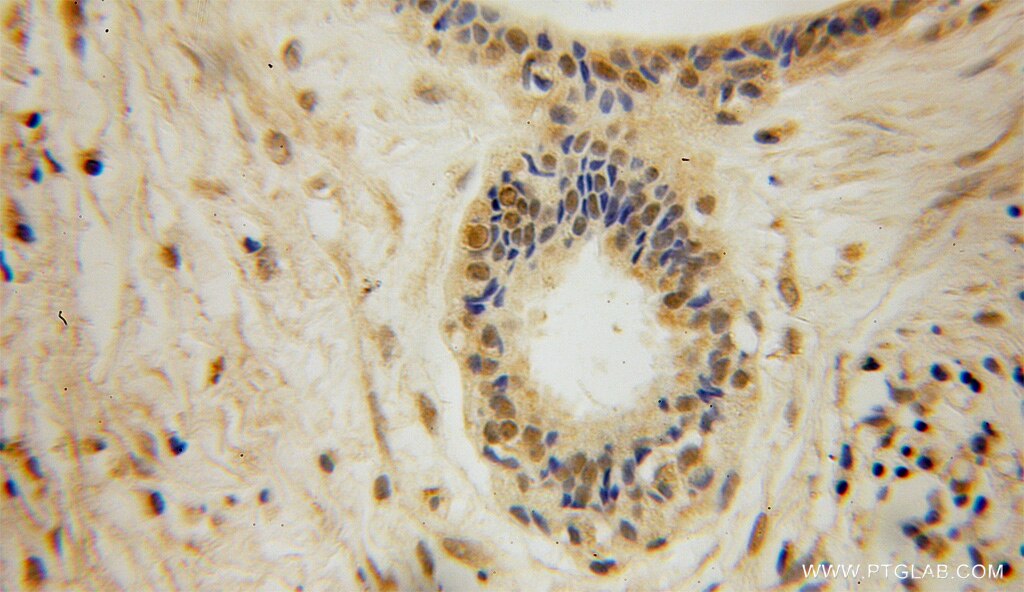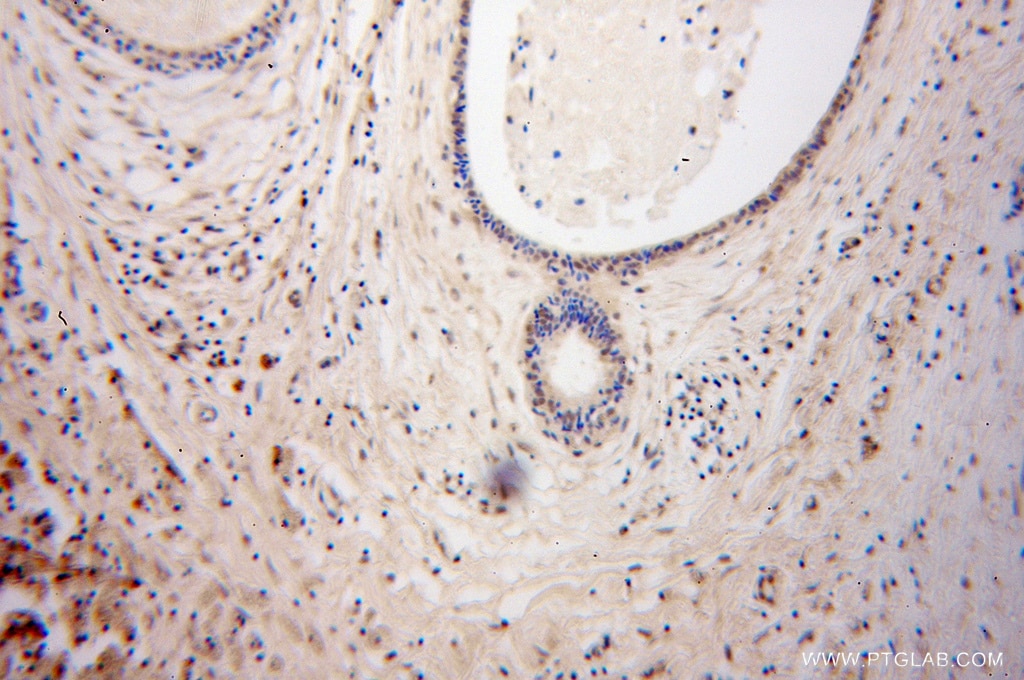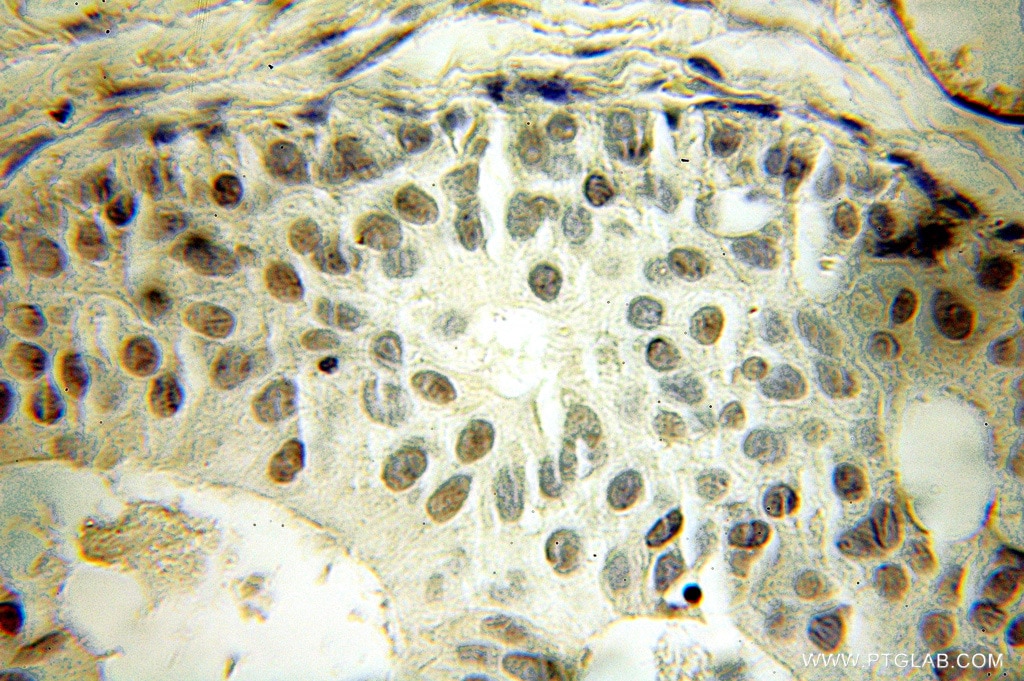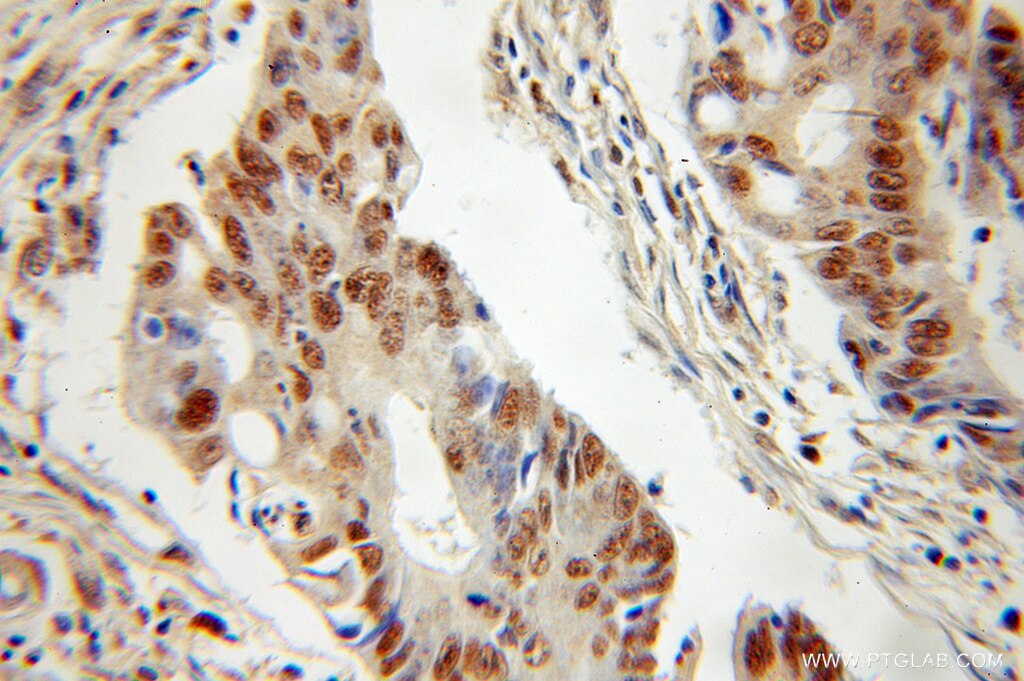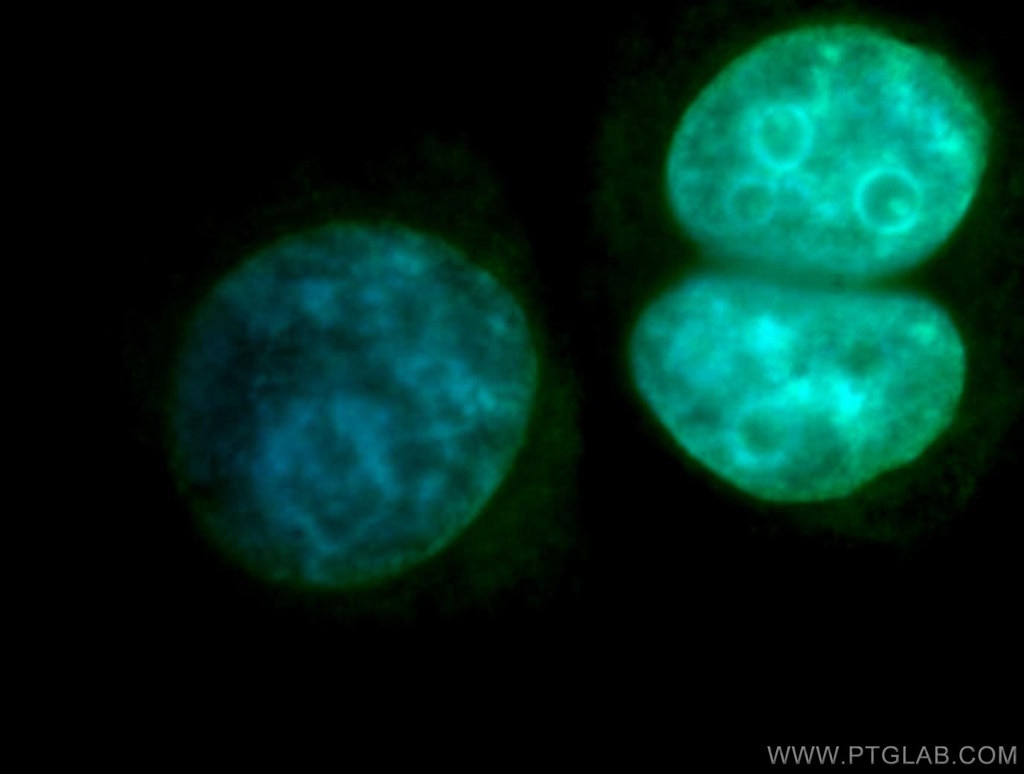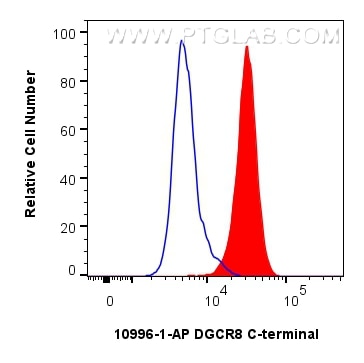- Phare
- Validé par KD/KO
Anticorps Polyclonal de lapin anti-DGCR8 C-terminal
DGCR8 C-terminal Polyclonal Antibody for WB, IHC, IF/ICC, FC (Intra), IP, ELISA
Hôte / Isotype
Lapin / IgG
Réactivité testée
Humain, souris et plus (1)
Applications
WB, IHC, IF/ICC, FC (Intra), IP, CoIP, ChIP, RIP, ELISA
Conjugaison
Non conjugué
N° de cat : 10996-1-AP
Synonymes
Galerie de données de validation
Applications testées
| Résultats positifs en WB | cellules HEK-293, cellules A431, cellules HeLa, cellules Jurkat, tissu testiculaire de souris |
| Résultats positifs en IP | cellules HEK-293 |
| Résultats positifs en IHC | tissu de cancer du sein humain, tissu de cancer du côlon humain il est suggéré de démasquer l'antigène avec un tampon de TE buffer pH 9.0; (*) À défaut, 'le démasquage de l'antigène peut être 'effectué avec un tampon citrate pH 6,0. |
| Résultats positifs en IF/ICC | cellules SH-SY5Y |
| Résultats positifs en FC (Intra) | cellules HeLa, |
Dilution recommandée
| Application | Dilution |
|---|---|
| Western Blot (WB) | WB : 1:500-1:2000 |
| Immunoprécipitation (IP) | IP : 0.5-4.0 ug for 1.0-3.0 mg of total protein lysate |
| Immunohistochimie (IHC) | IHC : 1:50-1:200 |
| Immunofluorescence (IF)/ICC | IF/ICC : 1:20-1:200 |
| Flow Cytometry (FC) (INTRA) | FC (INTRA) : 0.25 ug per 10^6 cells in a 100 µl suspension |
| It is recommended that this reagent should be titrated in each testing system to obtain optimal results. | |
| Sample-dependent, check data in validation data gallery | |
Informations sur le produit
10996-1-AP cible DGCR8 C-terminal dans les applications de WB, IHC, IF/ICC, FC (Intra), IP, CoIP, ChIP, RIP, ELISA et montre une réactivité avec des échantillons Humain, souris
| Réactivité | Humain, souris |
| Réactivité citée | rat, Humain, souris |
| Hôte / Isotype | Lapin / IgG |
| Clonalité | Polyclonal |
| Type | Anticorps |
| Immunogène | DGCR8 C-terminal Protéine recombinante Ag1429 |
| Nom complet | DiGeorge syndrome critical region gene 8 |
| Masse moléculaire calculée | 773 aa, 86 kDa |
| Poids moléculaire observé | 120 kDa |
| Numéro d’acquisition GenBank | BC009323 |
| Symbole du gène | DGCR8 |
| Identification du gène (NCBI) | 54487 |
| Conjugaison | Non conjugué |
| Forme | Liquide |
| Méthode de purification | Purification par affinité contre l'antigène |
| Tampon de stockage | PBS with 0.02% sodium azide and 50% glycerol |
| Conditions de stockage | Stocker à -20°C. Stable pendant un an après l'expédition. L'aliquotage n'est pas nécessaire pour le stockage à -20oC Les 20ul contiennent 0,1% de BSA. |
Informations générales
DGCR8 is a RNA-binding protein that assists the Rnase III enzyme Drosha in the processing of microRNAs (miRNAs), which regulate the expression of a large number of protein-coding genes[PMID: 22580560]. DGCR8, which contains two double-stranded RNA (dsRNA)-binding domains, may be an essential component of the primary miRNAs processing complex, along with Drosha, promoting the processing of primary microRNA to precursor microRNA. It is ubiquitous expressed in human and mouse tissues, and is deleted in DiGeorge syndrome[22323604]. The calculated molecular weight of DGCR8 is 82-86 kDa, but the post-modified DGCR8 is about 120 kDa (PMID: 18469815).
Protocole
| Product Specific Protocols | |
|---|---|
| WB protocol for DGCR8 C-terminal antibody 10996-1-AP | Download protocol |
| IHC protocol for DGCR8 C-terminal antibody 10996-1-AP | Download protocol |
| IF protocol for DGCR8 C-terminal antibody 10996-1-AP | Download protocol |
| IP protocol for DGCR8 C-terminal antibody 10996-1-AP | Download protocol |
| Standard Protocols | |
|---|---|
| Click here to view our Standard Protocols |
Publications
| Species | Application | Title |
|---|---|---|
Cell Hippo signaling regulates microprocessor and links cell-density-dependent miRNA biogenesis to cancer. | ||
Cell Super-Enhancer-Mediated RNA Processing Revealed by Integrative MicroRNA Network Analysis. | ||
Cell Stem Cell Principles of signaling pathway modulation for enhancing human naive pluripotency induction. |
